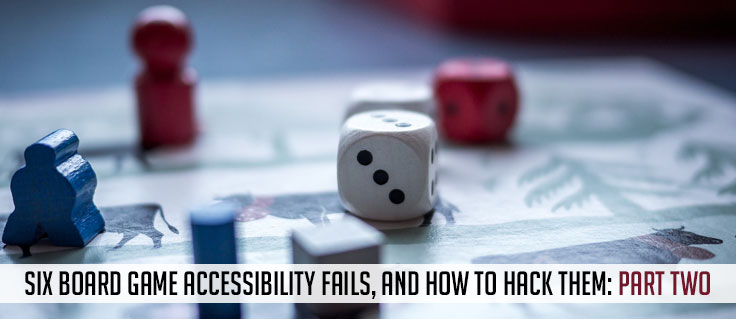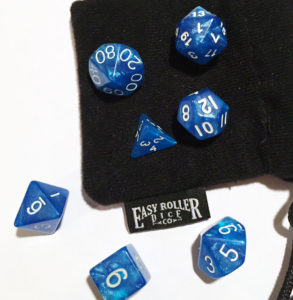In part one of this series, I covered the inaccessibility of hidden information, dexterity mechanics, and real-time games. Below are three more game mechanics and styles that prohibit me (and other disabled folks) from enjoying board games to their fullest. As always, please share your thoughts in the comments, or send a tweet to @geekygimp!
 Component Heavy
Component Heavy
The Problem: While component-heavy games could be appealing, especially when it comes to miniatures, they present an access barrier. Some games require different tokens to track a plethora of stats, points, and movements; add in multiple card decks and 20 robot miniatures, and you’re inundated with cardboard and plastic. I have trouble extending my arms, and my table space is limited, making it hard to keep all the components separate and organized. For someone with shaky hands, stackable tokens and exact component placement render many component-heavy games difficult or entirely inaccessible.
Read moreSix Board Game Accessibility Fails, and How to Hack Them: Part Two







 Imagine dice rolling across the table, landing on a number that seals the fate of your latest in-game decision – how does that moment make you feel? For me, it’s this inspired burst of energy and excitement – the same visceral reaction when I crack open a new book. Dice not only remind me of good times with friends, but they bring out my creative side with all their possibilities. With just a few d20s, I could design a game; add a pencil and paper, and I could imagine a whole world and its heroes.
Imagine dice rolling across the table, landing on a number that seals the fate of your latest in-game decision – how does that moment make you feel? For me, it’s this inspired burst of energy and excitement – the same visceral reaction when I crack open a new book. Dice not only remind me of good times with friends, but they bring out my creative side with all their possibilities. With just a few d20s, I could design a game; add a pencil and paper, and I could imagine a whole world and its heroes. Appearance alone,
Appearance alone, 

